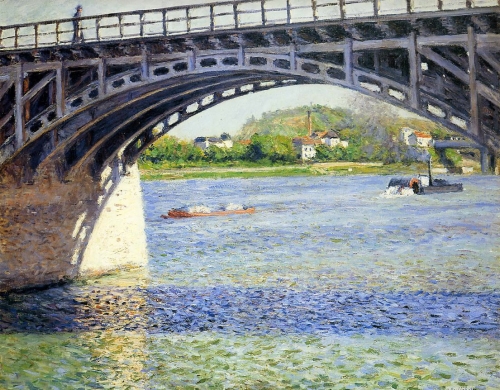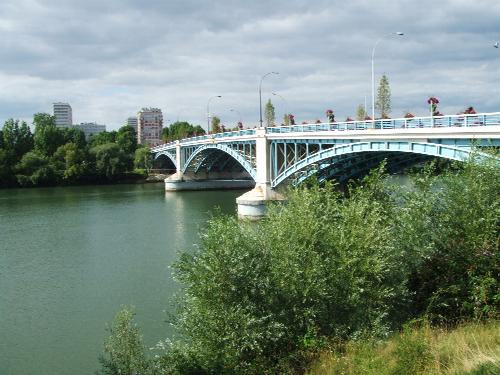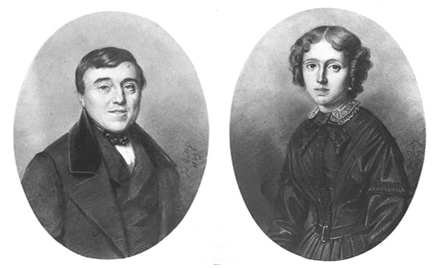
最新の記事
 ブリヂストン美術館がカイユボットの《イエールの平原》を新所蔵&展示
ブリヂストン美術館がカイユボットの《イエールの平原》を新所蔵&展示
ランダム表示
- 2015年2月 (2)
- 2014年12月 (4)
- 2014年11月 (2)
- 2014年5月 (2)
- 2014年3月 (1)
- 2013年12月 (3)
- 2013年11月 (1)
- 2013年10月 (1)
- 2013年8月 (2)
- 2013年3月 (3)
- 2013年2月 (2)
- 2013年1月 (3)
- 2012年9月 (3)
- 2012年4月 (1)
- 2012年2月 (2)
- 2011年10月 (4)
- 2011年9月 (5)
- 2011年8月 (5)
- 2011年7月 (8)
- 2011年4月 (2)
- 2011年2月 (1)
- 2010年12月 (2)
- 2010年10月 (3)
- 2010年9月 (4)
- 2010年8月 (2)
- 2010年7月 (5)
- 2010年6月 (6)
- 2009年11月 (1)
- 2009年6月 (30)
- 2009年3月 (1)
- 2009年2月 (4)
- 2009年1月 (6)
- 2008年12月 (6)
- 2008年11月 (6)
- 2008年10月 (12)
- 2008年9月 (1)
- 2008年7月 (1)
- 2008年6月 (11)
- 2008年5月 (3)
- 2008年3月 (9)
- 2008年2月 (2)
- 2008年1月 (8)
- 2007年12月 (1)
- 2007年11月 (4)
- 2007年9月 (9)

サザビーズの「イエールの谷」訳
サザビーズのモンソー公園の訳に続いて「イエールの谷」を翻訳したでござる。
なるほど大胆な風景画だったんですね。
それで印象派展にだしたのかな。
これがその当時どのくらい大胆だったかなんて現代の我々にはわからないのは残念だなぁ。
サザビーズの元ページはこちら >>

【由来】
パリ、アーネスト=メイ。1879年に購入、1921年まで所有。
パリ、アンドレ=モーリス。1955年頃購入。
パリ、デュルオ・リシュリューの「近代絵画」にて個人に売却(1991年4月15日)。ロットナンバー28。
落札予想価格:$1,000,000 – $1,500,000 (9千5百万円〜1億4千万円)
販売価格:$1,142,500(1億1千万円)
※日本円は参考です。売却当時のレートとは異なります。
〜中略(展示展覧会、文献)〜
【作品について】
1860年、カイユボットの父親はパリの南東にある緑豊かな渓谷イエールの土地を購入した。
若いカイユボットはその地所の周りの19世紀初頭風の公園や向こうに広がる丘々をすぐに気に入った。
イエールの風景はプティ=ジャンヌヴィリエの庭と共に画家の作品の中によく描かれるようになる。
カイユボットは「イエールの谷」の中で、谷のパターン化された風景を描くためにパステルを重ねた。
この画家の初期の風景画によく見られるように地平線を高い位置に持ってきて、大胆で近代的な表現をすることで19世紀末の風景画にありがちな表現を避けている。
ピエール・ウィットマーはカイユボットにおけるイエールの重要性をこのように述べている。
「イエール川はその地理と名景によって、モネにとってのエプトやセザンヌにとってのサント・ヴィクトワールと同じくらいカイユボットにとって重要な場所であった。画家は自分の世界の現実性を自分のニーズに合わせている。ギュスターヴ・カイユボットは自分の過ごした土地に新しく、オリジナリティがあり、そして全く個人的な側面を与えたのだ。田舎の生活はその永続的に繰り返され、そして常に過ぎゆく日々や四季のリズムを感じさせる自然を思い起こさせる。 (P. Wittmer, op. cit., p. 28).」
「イエールの谷」は1879年の第4回印象派展に出展されました。開催場所はオペラ通り28番地で、カイユボット、ドガ、モネ、ピサロといった独創性に富んだ作品が出された。カイユボットは第4回印象派展の組織の重要な役割を担っていた。
Ernest May, Paris (acquired by 1879 and until 1921)
André Maurice, Paris (acquired circa 1955)
Sale: Drouot Richelieu, Paris, Tableaux modernes, April 15, 1991, lot 28
Private Collection (acquired at the above sale)
【Exhibited】
Paris, La 4e Exposition de peinture, 1879, no. 28
Paris, Salon d’Automne, Caillebotte: Exposition retrospective, 1921, no. 2743
【Literature】
Marie Berhaut, Gustave Caillebotte, Paris, 1951, no. 81 (as dating from 1878)
Marie Berhaut, Caillebotte, sa vie et son oeuvre: Catalogue raisonné des peintures et pastels, Paris, 1978, no. 99, illustrated p. 116
Sophie Monneret, Impressionnisme et son époque, vol. III, Paris, 1980, listed p. 151
Pierre Wittmer, Caillebotte and His Garden at Yerres, New York, 1991, listed p. 308
Marie Berhaut, Gustave Caillebotte: Catalogue raisonné des peintures et pastels, Paris, 1994, no. 92, illustrated p. 107
Eric Darragon, Caillebotte, Paris, 1994, illustrated pp. 16-17
Ruth Berson, ed., The New Painting. Impressionism, 1874-1886: Documentation, vol. 2, San Francisco, 1996, no. IV-28, illustrated p. 125
Gustave Caillebotte: The Unknown Impressionist (exhibition catalogue), London, Royal Academy of Arts, listed p. 210
Pierre Sanchez, Dictionnaire du Salon d’Automne: répertoire des exposants et liste des oeuvres presentées, 1903-1945, vol 1, Dijon, 2006, listed p. 271
【Catalogue Note】
In 1860, Caillebotte’s father acquired a property in Yerres, a verdant river valley southeast of Paris. The young Caillebotte was instantly taken with the early nineteenth century gardens around the estate and the expanse of rolling hills that extended beyond. The landscape at Yerres, along with the gardens at Petit Gennevilliers, would figure prominently in the artist’s oeuvre. In La Vallée de l’Yerres, Caillebotte layers rich pastels to convey the patterned landscape of the valley. With a high horizon line, characteristic of many of the artist’s early landscapes, Caillebotte eschews the common expectations of landscape painting at the end of the nineteenth century with a boldly modern gesture.
Pierre Wittmer writes of the significance which Yerres held for Caillebotte, “The Yerres river – thanks to its location and scenic attraction… – was as important to Gustave Caillebotte as the Epte was to Claude Monet or Mont Saint-Victoire was to Paul Cézanne. The artist adapts the reality of his world to his needs. Gustave Caillebotte gave the sites in which he lived a new and original and wholly personal dimension. His rendering of rural life evokes its perennial and cyclic nature, always leaving us with a sense of the rhythm of passing days and seasons” (P. Wittmer, op. cit., p. 28).
La Vallée de l’Yerres was included in the fourth group exhibition which the Impressionists mounted in 1879. The exhibition took place at 28 avenue de l’Opera and included seminal works by Caillebotte, Degas, Monet and Pissarro. Caillebotte himself assumed an important role in organizing this fourth Impressionist group exhibition.
(quoted from Sotheby’s)
行ってきました(11)|アルジャントゥイユ橋
アルジャントゥイユについたらLe Stade、Argenteuilどちらで下車しても
目指すのはカイユボットが描きました「アルジャントゥイユ橋」です!

「アルジャントゥイユ橋とセーヌ川」
Argenteuil駅からのが近いかな。徒歩で行くことができます。
') clr_br('')

そこから見える眺めはこんな。

カイユボットのセーヌ川の作品を思い出します。

「ブゾン橋をのぞむセーヌ川」
※ブゾン橋はもう少し西側にあります。
橋の端にはモネの「アルジャントゥイユのひなげし」の案内板がありますよー。
この辺にこんな風にひなげしが咲いている場所があったんですね〜。
(カイユボットの作品じゃないのかよッと心の中でつっこむ)

ただ現在のアルジャントゥイユは、工業地帯であり景色のキレイな観光地という訳ではありません。
残念(>_< )
そしてアルジャントゥイユ橋も20世紀になって作り直されたものです。
印象派ファンならではの観光地ですね。

行ってきました(10)|アルジャントゥイユ
久々(すぎる…)の「行ってきました」シリーズ。
今回はパリを離れてアルジャントゥイユです!
19世紀、鉄道ができたことによってアルジャントゥイユへのアクセスが容易になり
印象派の画家たちはそこによく集うようになりました。
カイユボットはもちろん、モネやルノワール、シスレーらもアルジャントゥイユを題材にした作品を描いています。

シスレーの描いたアルジャントゥイユ
アルジャントゥイユまでの行き方は簡単!
サン・ラザール駅から出ているSNCF(国鉄)の近郊線でLe Stade駅、またはArgenteuil駅下車。
ただし、アルジャントゥイユを通らない列車もあるので気をつけて!
時間にして20分くらいだったと思います。

↑クリックで全体の路線図が開きます。

アルジャントゥイユの駅

乗ってきた鉄道の橋(GoogleMapより)
↓
↓
↓
そして・・・カイユボットが描いた「アルジャントゥイユの鉄道橋とセーヌ川」です!

向こうから汽車が煙を出しながら近づいているのがわかりますか?
時代が変わって色々様変わりしてしまってもカイユボットの作品を追体験できるなんてネ・゚:*(人´ω`*)
パリを離れる・・・というとなにやら恐ろしく感じましたが
列車に乗れば最寄りの駅につきますので大丈夫!レッツGO!!


